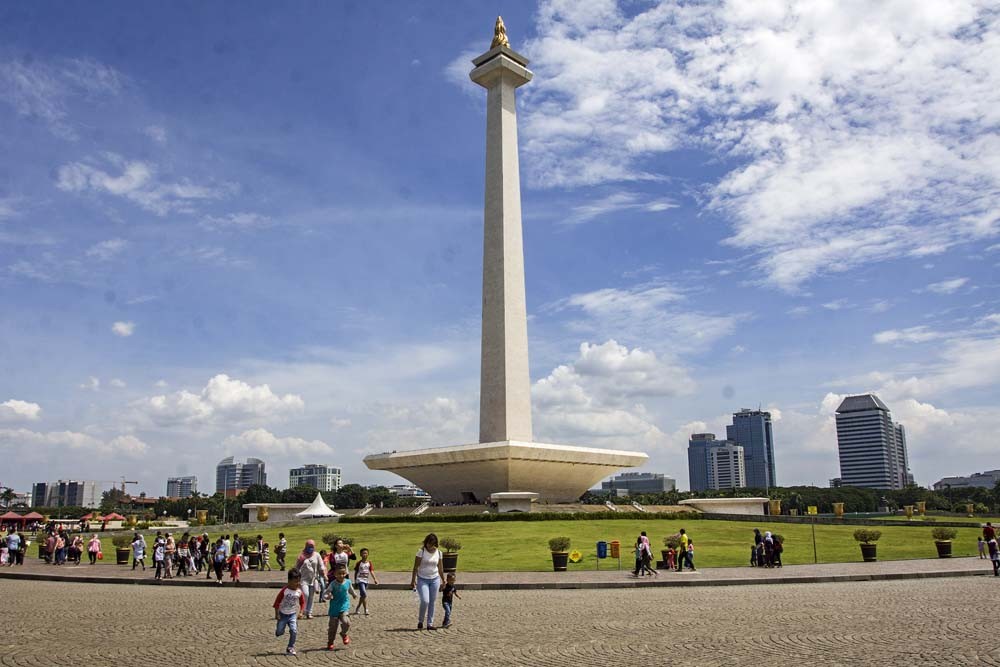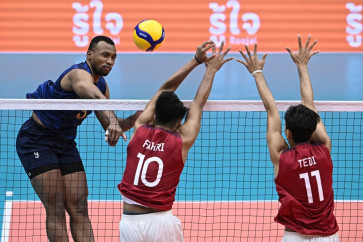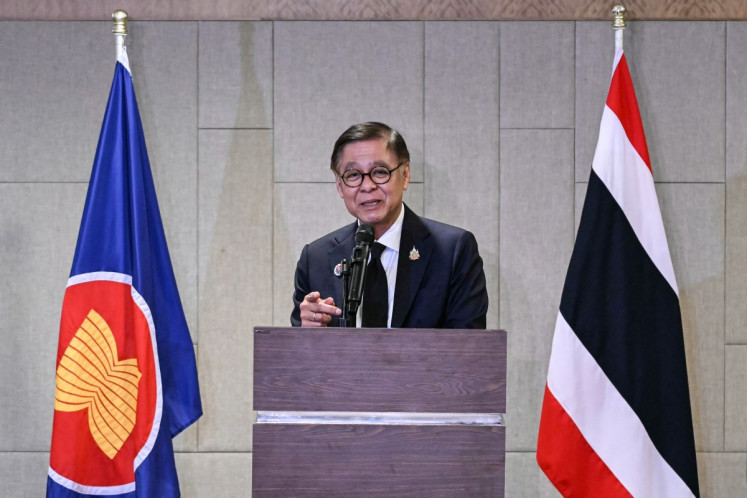Popular Reads
Top Results
Can't find what you're looking for?
View all search resultsPopular Reads
Top Results
Can't find what you're looking for?
View all search resultsInteresting facts about the National Monument
The National Monument (Monas) is more than a monument with its long history.
Change text size
Gift Premium Articles
to Anyone
T
he National Monument (Monas) has an important role as an open space in Jakarta. Located in Central Jakarta and occupying 80 hectares, Monas has become the place for many important public events.
Here are six interesting facts about the city’s landmark, according to kompas.com:
Early conflict
Although it officially commenced construction on Aug. 17 1961, many people, especially college students, were against Monas’ construction at the beginning. Standing at 132-meters, Monas was part of first president Sukarno’s Mercusuar (lighthouse) project alongside Gelora Bung Karno (GBK) sports complex in Senayan, Central Jakarta, and other buildings.
Monas' construction was perceived as excessive, particularly because Indonesia’s proclamation of independence occurred not too long prior and the country still needed to develop other sectors as well. Monas was finally opened to the public on July 12, 1975.
Meaningful construction
The shape of Monas symbolizes lingga (phallus or masculinity) and yoni (vagina or femininity), meaning that it represents prosperity. The idea came from Sukarno himself. Sometimes Monas is also compared to the shape of alu (pestle) and lesung (mortar) to pound rice.
The size of Monas represents the date of Indonesia’s independence; Aug. 17, 1945. The height from the base to the cawan (grail) is 17-m, which represents the date; 17th, while the height from the History Museum to the base of the grail is 8-m, which represents August as the eighth month (3-m underground and 5-m on the stairs to the base of the grail). The width of the square-shaped grail is 45 by 45-m, which represents the year 1945.
Different names
Monas and its area had been known for having different names, starting from Gambir Park, Ikada Park, Merdeka Park, Monas Park and Monas Garden.
Read also: Jakpost guide to Monas area
The gold flame
Children’s magazine website Bobo cited that a businessman from Nanggroe Aceh Darussalam, Teuku Markam, donated the 28-kilograms of gold to cover Monas’ flame structure. Teuku, who passed away in 1985, had been known for his nationalism throughout his life.
When it was initially built, 35-kg of gold was used to coat the structure, however in 1995, when Indonesia commemorated its 50th year of independence, 15-kg of gold was added, bringing its total weight to 50-kg. The flame structure represented the spirit of Indonesians when fighting against the colonization.
First Jakarta Fair venue
From its debut in 1968 until 1991, the Jakarta Fair was held in Monas area under the name of Gambir Night Market. Now the annual event can be visited at the JIEXpo Kemayoran, Central Jakarta.
More than just a statue
Monas is more than just a statue, as many facilities there have been improved, including security, the statue cleaning and other additional facilities, including sports courts, dancing fountain and food vendors. Monas is among top destinations for Jakartans and people who live outside the city either for jogging, taking photos or seeing the city from up above. (wir/asw)







